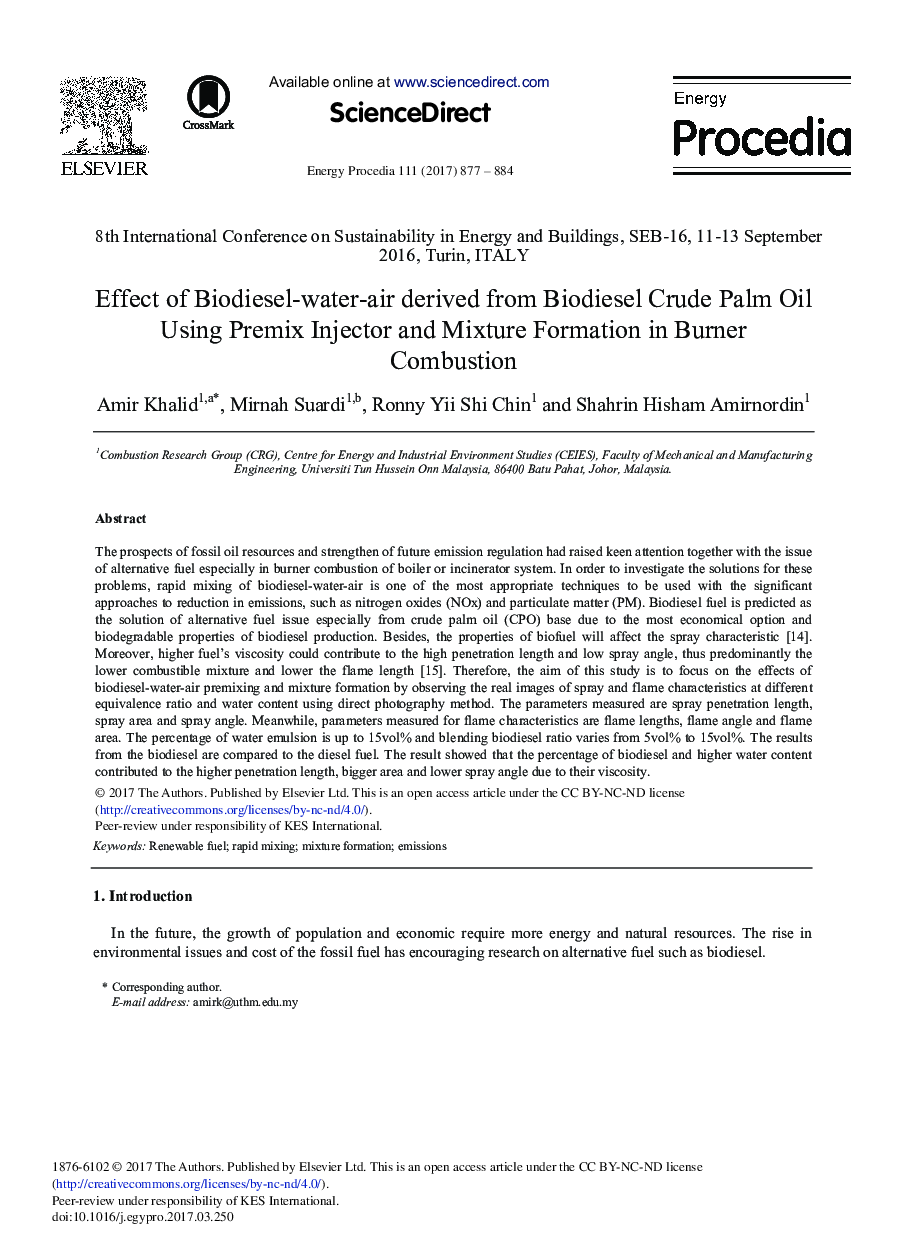| Article ID | Journal | Published Year | Pages | File Type |
|---|---|---|---|---|
| 5445604 | Energy Procedia | 2017 | 8 Pages |
Abstract
The prospects of fossil oil resources and strengthen of future emission regulation had raised keen attention together with the issue of alternative fuel especially in burner combustion of boiler or incinerator system. In order to investigate the solutions for these problems, rapid mixing of biodiesel-water-air is one of the most appropriate techniques to be used with the significant approaches to reduction in emissions, such as nitrogen oxides (NOx) and particulate matter (PM). Biodiesel fuel is predicted as the solution of alternative fuel issue especially from crude palm oil (CPO) base due to the most economical option and biodegradable properties of biodiesel production. Besides, the properties of biofuel will affect the spray characteristic [14]. Moreover, higher fuel's viscosity could contribute to the high penetration length and low spray angle, thus predominantly the lower combustible mixture and lower the flame length [15]. Therefore, the aim of this study is to focus on the effects of biodiesel-water-air premixing and mixture formation by observing the real images of spray and flame characteristics at different equivalence ratio and water content using direct photography method. The parameters measured are spray penetration length, spray area and spray angle. Meanwhile, parameters measured for flame characteristics are flame lengths, flame angle and flame area. The percentage of water emulsion is up to 15vol% and blending biodiesel ratio varies from 5vol% to 15vol%. The results from the biodiesel are compared to the diesel fuel. The result showed that the percentage of biodiesel and higher water content contributed to the higher penetration length, bigger area and lower spray angle due to their viscosity.
Related Topics
Physical Sciences and Engineering
Energy
Energy (General)
Authors
Amir Khalid, Mirnah Suardi, Ronny Yii Shi Chin, Shahrin Hisham Amirnordin,
